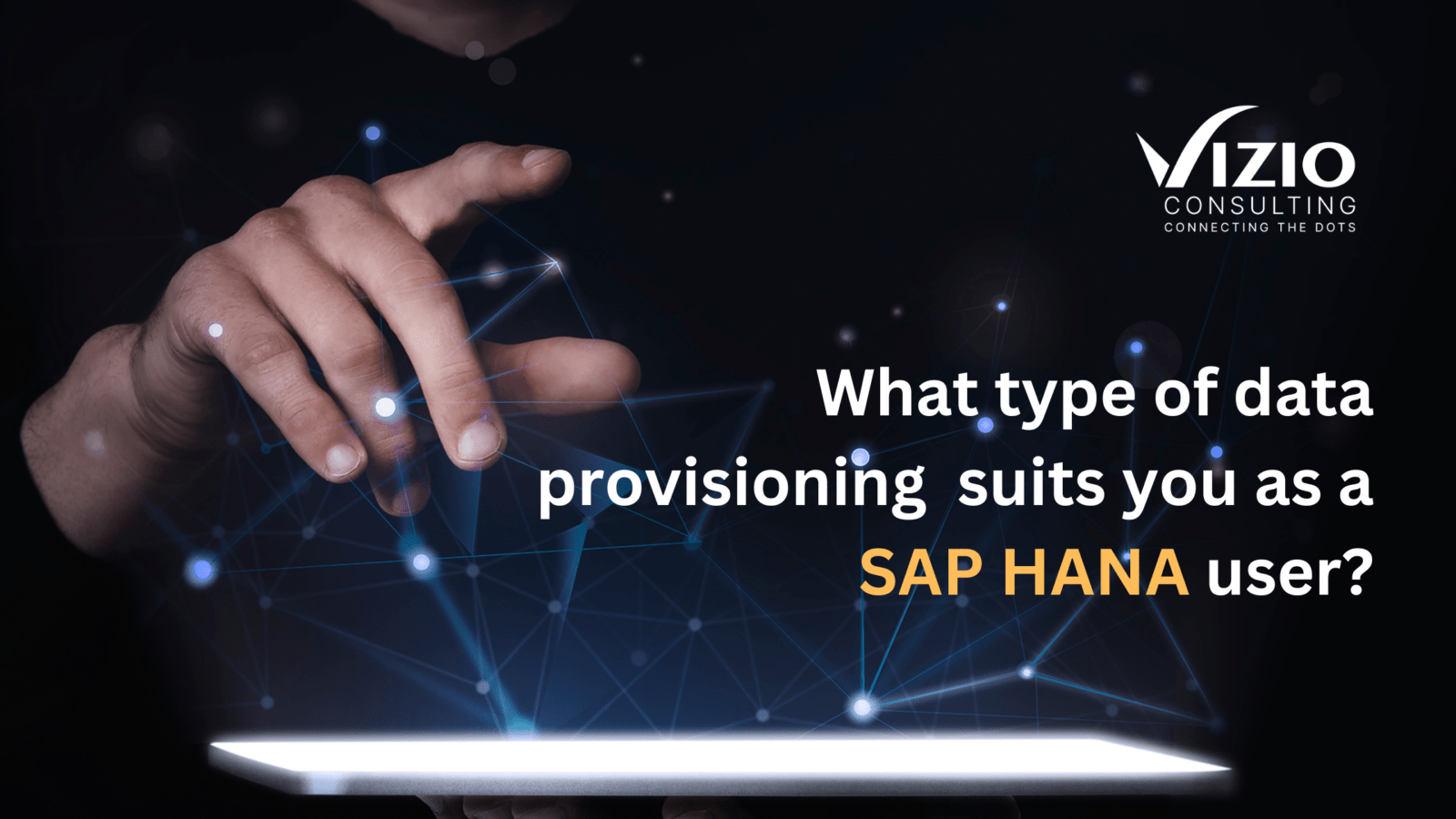SAP HANA, a single data base as a service (DBaaS) has been around in the market for quite a long time, and being the cloud data base that it is, it helps the users reduce IT infrastructure costs and makes large volumes of data storage simple and secure. Having lesser reliance on on-premise devices can also mean that there’s a lot less operational downtime, and there’s complete tracks that can cover all the events and hence zeroing in on an abnormal occurrence like hefty migrations or unauthorized access becomes easy to find and track.
Being one of the most competent enablers and implementers of SAP services, including HANA, we at Vizio consulting would like to introduce you to, or if you’re already aware of it, get your understanding about Data Provisioning in SAP HANA simpler.
We’ll cover a lot of basic ground here in this blog, so please bear with us and feel free to skim through if you already know some of these concepts.
What is Data Provisioning?
Simply put, data provisioning means to fetch desired data from the source to target. However, that’s really not the whole picture. Modern day data provision aims at making data searchable, meaningful, safe, and accessible for data consumers. For this, the data owners will have to use products that can enable these requirements, while also being able to track datasets and ensure data protection. This two way requirement is solved by provisioning data, and SAP HANA implementation can help your company achieve faster, safer data provisioning.
There are types of data provisioning that SAP HANA provides, and they are as below.
- Read time data provisioning
- Near real time data provisioning
- Data federation
- Local data import
How do we know which one would be the most suitable data provisioning model for your org and it’s requirements? Well, read along and we can decide! We’ll give you a clue. The names of these data provisioning types mostly speak for themselves.
Real Time Data Provisioning
System Landscape Transformation and Sybase Replication Server are two tools this model uses to create a copy of the source data in the target. The tools work together to fetch real time data from the source and creates a copy of the same by pasting the data in the target system. Understandably, there’s a 5 second latency. Sources like SAP EEC and sources from Oracle, IBM and other supported vendors can make use of the provisioning model.
Near Real Time Data Provisioning
The simplest way to distinguish this and RTDP is this provisioning model lets users work on the meta data at the data source before pushing the data to the target. This is enabled by tools like BODS or Business Objects Data Services, an ETL tool. This simple differentiation allows users to work on structured and unstructured data and helps users make changes or organize data the way they want right from the source, before sending it to the target.
Data Federation Model
SAP HANA is known for covering most of the use cases that people might have. In this model of data provisioning, the data need not be brought in to the target system at all, really. The source gets to retain data, and HANA lets you create virtual data copies in the target system. Data modelling can be then done on top of these virtual data copies. Requirements for this system would be installing of drivers in the SAP HANA box, and use them to work with sources like Oracle, Hadoop, Teradata etc., As your SAP partners, VIZIO can help with the same.
Local Data Importing
It’s no secret that SAP HANA allows you to import CSVs and flat files into the system. From the source, you can simply import the data in these file formats and start working on them.
While these provisioning methods are not all of the methods there are, these four data provisioning models can help with most of the SAP HANA users and solve their use case. If there is anything else that you’d like to discuss, or if you’re looking for solutions other the four of them, please feel free to email us at info@vizioconsulting.com.
As SAP professionals with over 25 years of industry experience, VIZIO has a solution for all your data problems, for sure. We offer customized solutions to your problems, and implementation services as well. We’ll help you pick the right tool, and make it easy for you to use them as well!
Our experts provide personalized demos after understanding the business needs. Click
here to talk to our experts.

